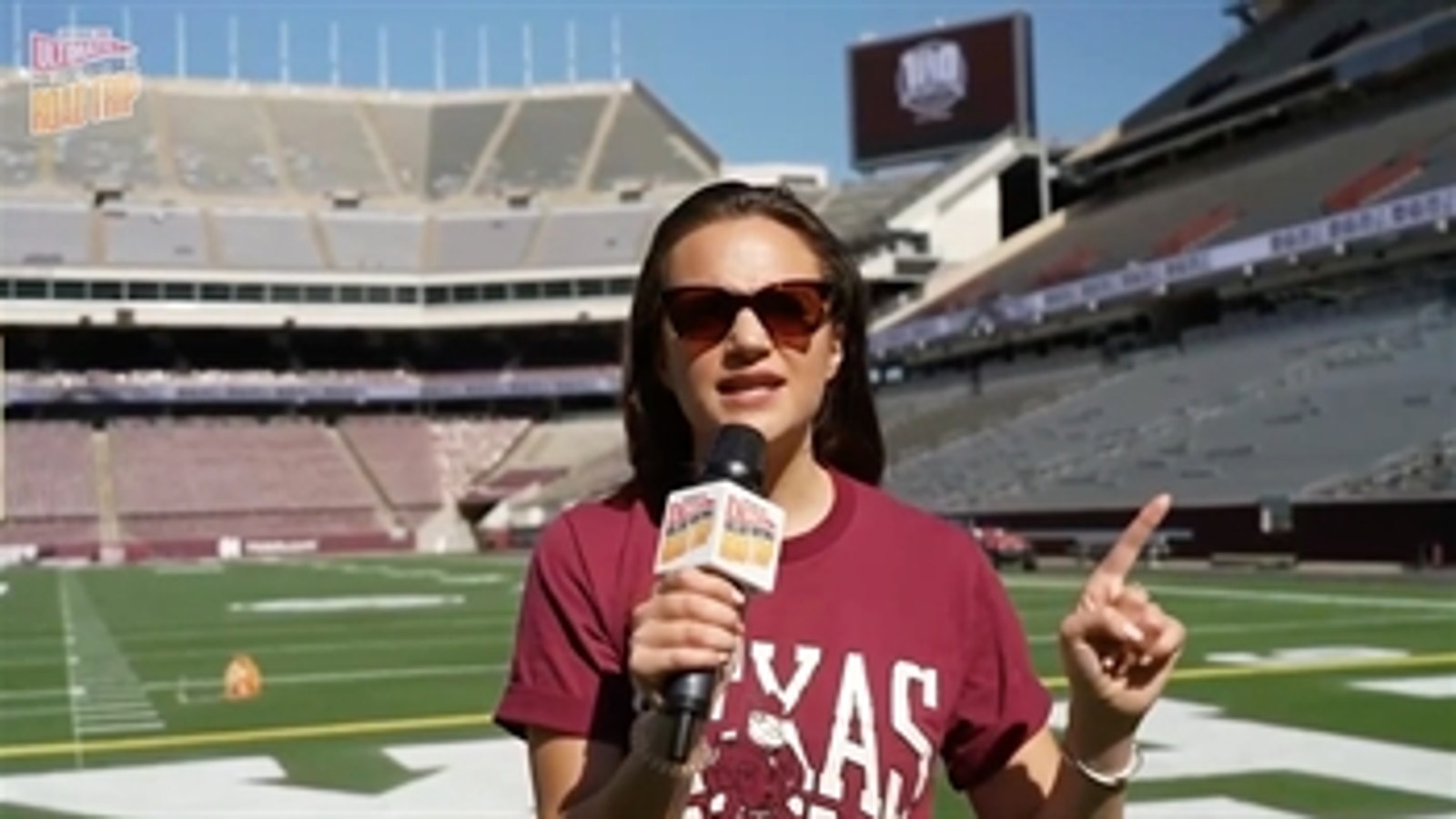
College Football Road Trip: Inside 'The Big House' at Michigan
By Charlotte Wilder
FOX Sports Columnist
It’s not hard to understand why Michigan Stadium is affectionately called The Big House.
It is very, very big.
It is, in fact, the biggest stadium in the country and the third-largest in the world. It officially fits 107,601 people, though it has hosted 115,000 for other events such as NHL and NCAA hockey games and Premiere League matches. Its capacity is very close to the population of its hometown of Ann Arbor, which has 121,000 residents.
The House part, though — that’s a little confusing, isn’t it? Sure, it houses Michigan’s football team, but how can something so gargantuan feel … homey?
Call me crazy, but it just does. The place is cozy. Perhaps it’s because the bowl slopes gently, so spectators stretch back for a while before the grade becomes steeper, making you feel like you’re being cradled in football heaven.
The whole thing is built down: In 1926, when the school started construction here, it found that there wasn’t much solid ground underneath the site it had purchased for $240,000 (and Millennials can’t even buy houses these days!). This was due to a high water table, which, in normal person language, just means that the groundwater comes up unusually close to the surface of the earth and mingles with the soil.
The builders realized that the best way to construct the stadium was to just keep digging until they reached solid ground. There’s even a myth that a steam shovel got stuck in the muddy quicksand, and it was easier to bury it rather than fish it out. I like to believe that’s true because it’s funny to imagine football being played over heavy machinery. Some people say that if you go onto the 50-yard line at midnight, you can hear a bubbling brook underneath the turf (you cannot).
The exterior of the stadium feels like the entrance to a speakeasy. A somewhat unassuming brick wall gives way to a submerged labyrinth of hallways and a windy, cacophonous, giant hole in the ground where legends of Michigan football have etched their names into the program’s storied history.
I was lucky enough to film a tour of the stadium on Thursday with no one in it, ahead of the Wolverines' game against Penn State on Saturday (noon ET on FOX and the FOX Sports app). Going to a college football stadium when there isn’t a game feels like visiting a place of worship when there are no services, or a banquet hall when there is no reception, or a music venue when there isn’t a concert. The ghosts of past games linger: the missed field goals doink quietly off the goalposts, the faint roar of the crowd echoes off the empty seats, and the phantom whistles make you turn around, searching for the sounds.
They’re not there, of course. But the sensory experience is such an integral part of college football that you hear them anyway. These coliseums carry the souls of programs dating back almost 100 years or more.
As I walked around the field, a family of four came into it. They were on a tour themselves and took a picture on the giant maize-colored M painted in the middle of the 50-yard line. It wasn’t hard to imagine that photo turning into their holiday card this year. I could envision gold lettering stamped over the image as it hangs on their relatives’ fridges.
Michigan is a place for family. The bleachers have no chair backs, so it feels like your high school on steroids. The suites are tucked way up in a tower above the stands. It doesn’t seem like it’s been designed for boosters, even though it — and everything else in college football — has.
The Big House is old and worn-in, not in a dingy way, but in the way your favorite boots just get better and more comfortable every time you wear them. The renovations that Michigan has done over the years have taken the original 72,000-person stadium and almost doubled it in size. Apparently, Michigan’s long-time athletic director Fielding Yost had the stadium built so that it could be expanded to fit up to 200,000 people. He believed that one day, it would need to seat 150,000. He wasn’t that far off.
I’ve been lucky enough to go to six of the eight college football stadiums that are among the 10 largest stadiums in the world: LSU’s Tiger Stadium, Texas A&M’s Kyle Field, Ohio State’s Ohio Stadium, Tennessee’s Neyland Stadium and Texas’ Darrell K Royal–Memorial Stadium.
I’m only telling you this so that when I tell you that every giant stadium in college football is completely different from all the others, you’ll believe me. If you followed along on last year’s Ultimate College Road Trip, you’ll know that I fell in love with LSU and Death Valley (another name that holds true). Walking into that place at night feels dangerous in the best way, like watching a good scary movie or driving just a little too fast. It’s spooky and haunted and massive. It exemplifies its program with its inherent sense of steel and concrete swagger.
Charlotte Wilder's Texas A&M college stadium tour
A&M’s Kyle Field rises out of the hard Texas ground like an oil rig. Its brick facade and sleek interiors feel more like something you’d find in professional sports. Money oozes out of its suites and strange chants ring down from its highest seats. The University of Texas is for cowboys — it’s hot, it’s bright, it’s wide and tall, and the burnt orange gives it a rustic yet stately vibe. Neyland Stadium sits next to the water of the Tennessee River like a massive lighthouse. It’s a friendly beacon to everyone in Knoxville and beyond who loves that checkered bowl and an intimidating warning to everyone who has to compete there.
Ohio State’s Horseshoe might not have the most chilling name, but it’s the most chilling place. Where Michigan Stadium is inviting and warm, Ohio State is cold and imposing. You could argue that both are great strategies against opposing teams — lure them in with a sense of security and then trounce them, or make sure they’re scared from the get-go.
Stadiums in professional sports vary widely, too, of course. No one would ever confuse Soldier Field with SoFi, or mistake Fenway for Wrigley. But college football stadiums exist on an entirely different plane because of their size. And their size is required because of how deeply people care about their college teams and how many feel the need to go to the games.
I’ve said this before, but college football is about home. It’s not even as much about football for many people as it is about place and memories. It is legacy, roots and tradition. It’s steeped in local politics and money; even if you’re not into college football, the sport and its timetable are inescapable in a university town with a program that matters.
This is why, when you go over to Michigan’s House, you’re walking into the giant, beating heart of its program. You are, quite literally, burrowing into the very dirt from which this fan base grew. It might not be yours, but you’re home.
Charlotte Wilder is a general columnist for FOX Sports. She's honored to represent the constantly neglected Boston area in sports media, loves talking to sports fans about their feelings and is happiest eating a hotdog in a ballpark or nachos in a stadium. Follow her on Twitter @TheWilderThings.











